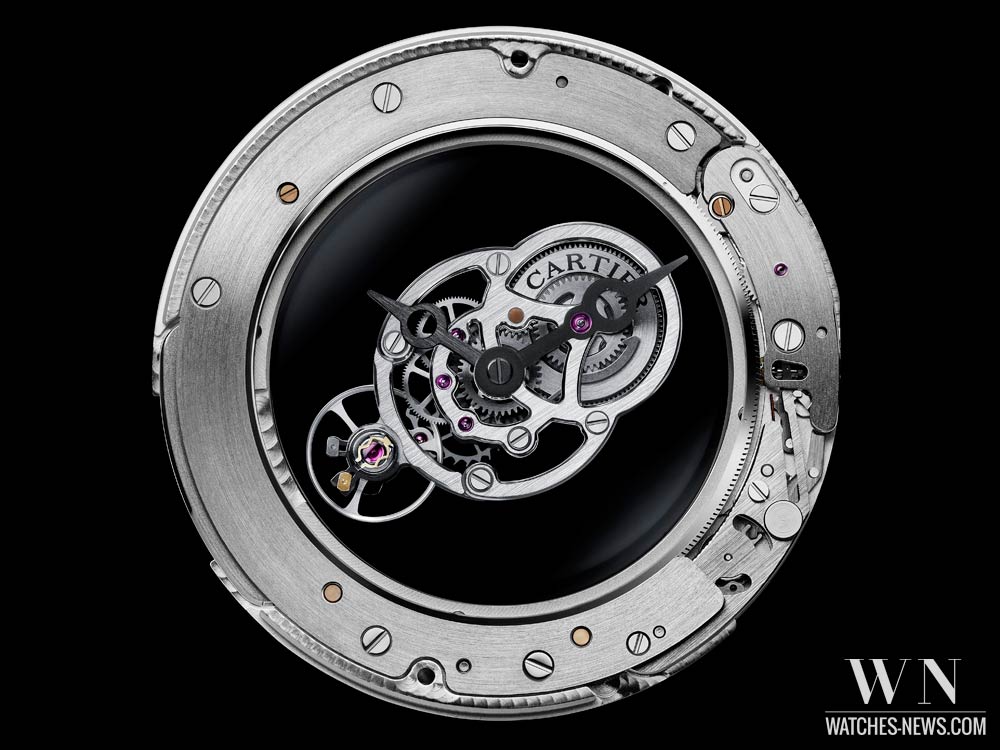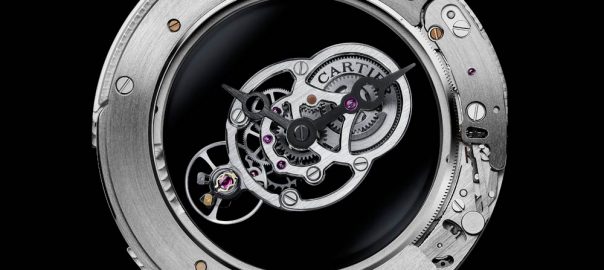Introducing the Rotonde de Cartier Astromystérieux
Sheer magic
Discussing the secrets behind a mysterious movement is like revealing a magic trick. Cartier’s first mystery clock was actually inspired by the ones designed by the iconic illusionist and father of modern magic, Jean-Eugène Robert-Houdin (1805-1871). This piece, Model A, was made in 1912 by watchmaker and Cartier’s exclusive supplier, Maurice Couet. It used Houdin’s original idea of fitting the hands onto two glass discs with a serrated metal edge. The discs were fuelled by the movement (usually in the clock’s base) and turned with the hours or minutes taking the hands with them. A century has passed and nothing’s changed. Almost nothing. Just that the clock has become a wristwatch. As we’re sure you’ve guessed, this small detail has a big impact.

It works by sheer magic. Four sapphire discs are layered on top of each other. The top one acts as the cage’s lower bridge and is linked to the second disc that powers the hour hand. The third is part of a patented barrel winding system which also has a floating pinion that only comes to life when the crown is turned. Last but not least, the fourth fixed disc at the bottom of the movement enables the crown, once pulled out, to come loose and set the time.
The limited edition Rotonde de Cartier Astromystérieux (100 available) and its manual wind 9462 MC calibre comes in a 43.5mm 950 palladium case.
By Fabrice Eschmann
